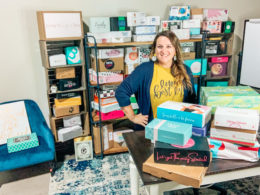We’ve all heard of product development. When it comes to making an awesome product, there are numerous things to consider, from feature set to design and more. But in today’s digital world, there’s another aspect of product development that most of us look over: virality. Did you know that product development is also a function of a solid marketing strategy? Marketing is so important to put into your product that whenever I teach or lecture a class, I make sure to emphasize that strong marketing starts with product. I’m not talking about building a product that amazes customers, although that is a great place to start, too. I’m talking about building marketing engines into your product that drive a one-to-many scenario, wherein you acquire one user and they drive multiple acquisitions for you themselves with the product.
If you don’t have those processes in place, then each web visit, in-app session or customer journey that you spend time or money on acquiring is wasted, as it doesn’t bring in anything more of value, exponentially. Think about it this way: If your product could naturally turn one user into five, how much quicker would your business scale? This is a huge opportunity for your business, and is growth hacking at its core. It’s not as difficult as you’d think, either. If you’re a non-tech founder reading this, rest easy, because you don’t need a dev team to execute.
Start building marketing into your startup’s product with these three simple strategies:
Related: 8 Steps for the Perfect Product Launch
Use better notifications
Before going any further, take a second to think about how many times per day you look at your phone. Probably a ton, right? If you do, don’t feel too bad: A recent study found that the average American checks their phone 80 times per day!
Don’t get me wrong, smartphones are awesome, but 80 times per day (as crazy as it is) is all thanks to push-notifications. Every notification comes with a microdose of excitement, and when used right, push notifications can do some amazing things for your product. Not only does it keep users engaged, but it keeps you and your brand top of mind, which drives word-of-mouth marketing.
So what does a good push notification look like? For Snapchat, it’s a new message notification, for Instagram it’s a new like. The list goes on, but what it comes down to is this: every app is different.
Here are a few types of push notifications that can work with any product:
- Engagement: Engage with users who recently visited your site. A great example of this is sending users a message based on abandoned carts.
- Social media: Use push notifications to direct individuals to social media channels, especially when you’re running a social-media only deal or promotion.
- Valuable content: Send users discounts and promotions for products that they’ve viewed, either recently or during past visits.
Think of how you can drive not only engagement, but also how you can encourage users to spread the word about your app via their own social media engagement. Something along the lines of “Tell Your Friends, You Just Achieved XXX” or “Wow, you’re on fire today! Spread the word.” When it comes to notifications, focus on value. Remember; give users a dose of excitement.
Push to share at “a-ha” Moments
Every successful product has what I call an “a-ha moment,” or an exact time when the user is most delighted and realizes they love your product. No matter what the product is, your ability to create an “a-ha” moment will determine your startup’s success. For example, for a phone charger, the “a-ha” moment is when the phone begins charging. For a chair, it’s the moment an individual sits down; and for Tinder, it’s the moment that a user gets their first hot match. The “a-ha” moment is everything, and the great thing about tech is that it enables that “a-ha” moment to be shared.
By creating and identifying those “a-ha” moments, you can ensure that customers continue to use your product. By giving users the ability to share at that exact “a-ha” moment, you can create virality. When a person sees someone they know experiencing a positive moment or reviewing a product or service emphatically, they want to experience it, as well.
So what does this look like? For fundraising platforms, it’s the moment you can share your donation after making one. For Instagram, it’s the moment you share a picture for the world to like. For e-commerce, it’s telling a user how much they saved after a purchase.
What does the “a-ha” moment look like for your company?
If the “a-ha” moment is there, it needs to be shared!
Sign Up: Receive the StartupNation newsletter!
Simple social currency and gamification with badges
Want to make users love your product? Plan your product roadmap around offering them more and more value. One way to do so is with gamification. Gamification is the area of applying gaming elements to products in order to make them more addicting. People are naturally addictive creatures. Put it this way: Imagine that you could have the power of Fortnite in your social media app. Well, you can. Gamification works so well because it leverages the feeling of accomplishment, emotional connection and most importantly, fun.
One of the simplest ways to create gamification is by using a form of currency in your product. Similar to Monopoly money or game tokens, you can create a simple currency that your users must earn to purchase prizes, gifts and other incentives related to your product. Social currency could be as easy as counting the likes on their posts, or giving them “Karma” like on Reddit. Providing badges (utilized by Foursquare) and creating challenges are also great ways. Go through your product and think of ways you can incentivize users by pushing them to achieve more, share more and do more. Think of how your platform can establish different levels to users, similar to Yelp Elite, perhaps. Find and unlock this gamification for massive growth.
How have you successfully built marketing into your startup’s product? Share your methods in the comments section below, and best of luck implementing the above new strategies!






